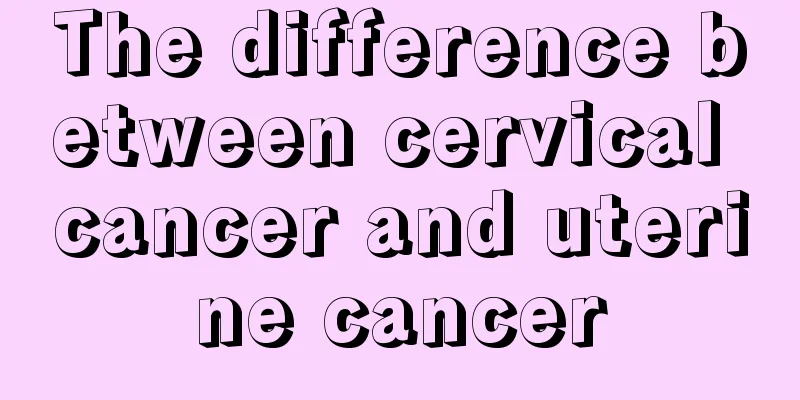The difference between cervical cancer and uterine cancer

|
Cervical cancer is a tumor disease that is common in middle-aged women between 40 and 60 years old. The disease is usually accompanied by vaginal discharge, vaginal bleeding, contact bleeding, and postmenopausal vaginal bleeding. Although this disease is very common, many people still do not know what cervical cancer is. What exactly is cervical cancer? Cervical cancer is one of the most common malignant tumors of the female reproductive system, and its incidence rate ranks second only to breast cancer in the number of female malignant tumors. Women are afraid of cervical cancer, but they don't know the root cause of cervical cancer. The professor introduced that it has been confirmed that human papillomavirus (HPV) infection is the culprit of cervical precancerous lesions and cervical cancer. In other words, without HPV infection, cervical cancer will not occur. HPV is mainly transmitted through sexual intercourse, and can also be infected through contact between reproductive organs and unclean utensils, such as using unsterilized public toilets and bathtubs. Many women think that only unclean sexual intercourse can cause HPV infection, but this is not the case. HPV is widely present in the daily environment. Even in a one-to-one sexual relationship, HPV can be infected through sex or contact with each other. Endometrial cancer is a malignant tumor originating from the endometrial glands, also known as uterine body cancer, most of which are adenocarcinomas. It is one of the three major malignant tumors of the female genitalia. In my country, endometrial cancer is much lower than cervical cancer, but in some developed Western countries, this disease is higher than cervical cancer and ranks first among gynecological malignancies. The peak age for endometrial cancer is 58-61 years old, accounting for about 7% of all female cancers and 20%-30% of reproductive tract malignancies. The incidence rate has been on the rise in recent years, approaching or even exceeding that of cervical cancer. It is related to long-term estrogen stimulation, obesity, hypertension, diabetes, infertility or sterility, menopause and other physical and genetic factors. The treatment principle of endometrial cancer is to choose the appropriate treatment method according to the patient's age, physical condition, lesion range and histological type. Since the vast majority of endometrial cancers are adenocarcinomas, which are not very sensitive to radiotherapy, surgery is the main treatment. Other comprehensive treatments include radiotherapy, chemotherapy and drugs (chemotherapy, hormones, etc.). Early patients are mainly treated with surgery, and adjuvant therapy is selected according to the results of surgical-pathological staging and high-risk factors for recurrence; advanced patients are treated with comprehensive treatment including surgery, radiotherapy and drugs. |
<<: How to diagnose uterine cancer
>>: What medicine should I take if I have uterine cancer
Recommend
How long does it take to do sit-ups to train your abdominal muscles
Sit-ups are a good form of exercise, and for thos...
What can't you eat after teeth cleaning
Many people are very concerned about their own im...
How much does it cost to cure a pituitary tumor
Nowadays, patients in hospitals have all kinds of...
CLS biological immunotherapy opens a new era in the treatment of uterine tumors
Eliminating uterine tumors without removing the u...
Can methanol be removed by heating homemade wine?
Every autumn is the season when grapes ripen. At ...
Is pancreatic cancer hereditary?
Pancreatic cancer is related to heredity, which c...
What are the typical symptoms of liver cancer? Who is prone to liver cancer?
However, in the past two months, Mr. Li's rig...
How to soak dried shrimps
Dried shrimps are also called dried shrimps or sh...
Symptoms of measles, mumps and flu
MMR is a disease that is closely related to peopl...
Why do I still feel hungry after eating?
Three meals a day are the amount of food that eve...
Early symptoms of muscular dystrophy
In daily life, we must develop good living habits...
What to eat after a high fever
People often suffer from symptoms of colds and fe...
Recommended high-quality hospitals for osteosarcoma
There are many osteosarcoma patients who choose h...
What to do if the nipple is broken and bleeding
If your nipple is broken and bleeding, you must g...
Nose surgery sequelae, be cautious when doing rhinoplasty
More and more people choose rhinoplasty surgery, ...









